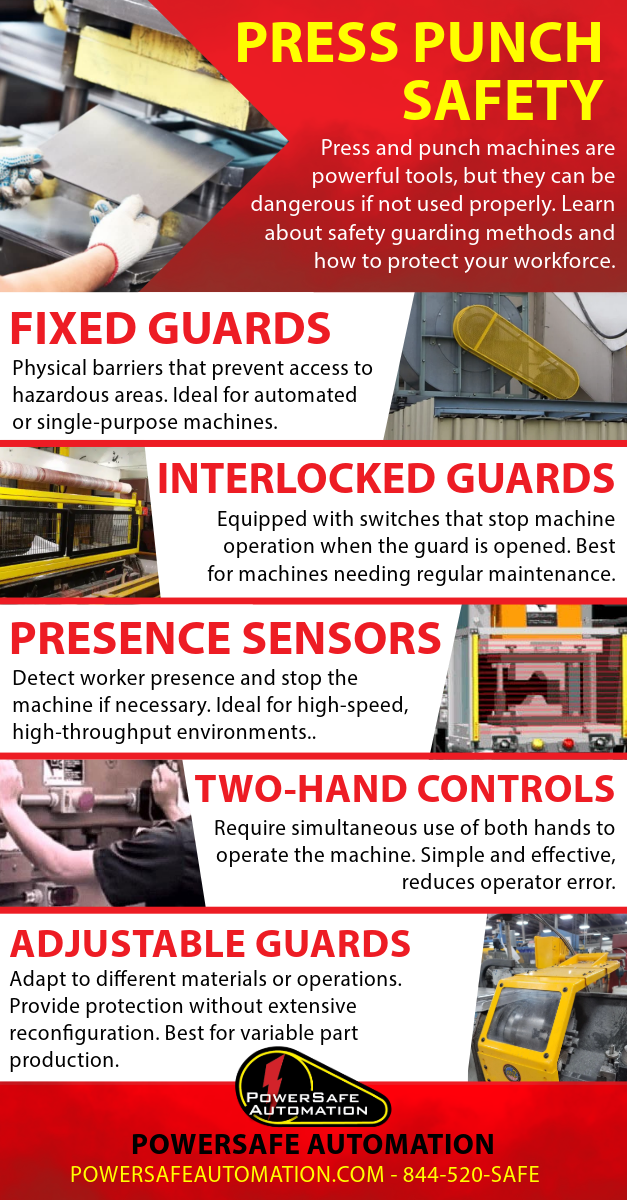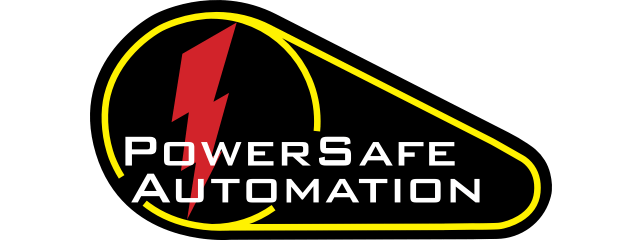Introduction
In fast-paced manufacturing environments, press and punch machines are workhorses—powerful, precise, and often indispensable. But they also pose some of the most serious safety risks on the plant floor. According to OSHA, amputations are among the most severe and prevalent injuries associated with mechanical power presses.
As a Safety Manager, your dual mission is clear: protect human lives and optimize operational productivity. The key to achieving both? Implementing effective, modern machine safety guarding.
The High Stakes of Press & Punch Machine Safety
Press and punch machines—whether hydraulic, mechanical, or pneumatic—carry out high-force operations. Their risks include:
- Crushing injuries
- Amputations
- Lacerations
- Eye and face injuries from flying debris
Each incident not only endangers workers but also disrupts operations, triggers regulatory fines, and impacts morale.
Understanding OSHA and ANSI Standards
Before implementing safety improvements, it’s crucial to align with regulations. The most relevant standards include:
- OSHA 29 CFR 1910 Subpart O – Covers machinery and machine guarding.
- ANSI B11 Series – Offers detailed safety requirements for different types of presses.
- ANSI/RIA R15.06 – Important for robotic integration in press operations.
Compliance is not just about avoiding penalties—it’s about building a proactive safety culture.
Common Guarding Solutions for Press & Punch Machines
Here are proven safeguarding methods designed to minimize risk without slowing down production:
1. Fixed Guards
These are physical barriers that prevent access to hazardous areas. Ideal for operations that don’t require frequent changeovers.
- Best for: Fully automated or single-purpose machines
- Benefits: Reliable, low-maintenance, tamper-resistant
2. Interlocked Guards
Equipped with switches that stop machine operation when the guard is opened or removed.
- Best for: Machines needing regular maintenance or tool changes
- Benefits: High safety integrity, encourages proper lockout/tagout procedures
3. Presence-Sensing Devices
These include light curtains, laser scanners, and pressure-sensitive mats. They detect worker presence and stop the machine if necessary.
- Best for: High-speed, high-throughput environments
- Benefits: No physical obstruction, faster cycle times, greater operator freedom
4. Two-Hand Controls
Require simultaneous use of both hands to operate the machine, ensuring hands are away from the point of operation.
- Best for: Manual or semi-automated setups
- Benefits: Simple, effective, reduces operator error
5. Adjustable and Self-Adjusting Guards
Adapt to different materials or operations and provide protection without extensive reconfiguration.
- Best for: Variable part production
- Benefits: Flexibility and consistent safety
How Guarding Improves Productivity (Yes, Really)
There’s a common myth that safety slows production. But smart safety solutions actually boost uptime and efficiency by:
- Reducing unplanned downtime due to injuries
- Speeding up setup with modular or automated guards
- Enabling safer, faster maintenance with interlocked systems
- Supporting continuous improvement initiatives with data insights from smart sensors
In short, safe machines run better—with fewer stops, fewer errors, and a more confident workforce.
Implementation Tips for Safety Managers
Here’s a practical approach to upgrading safety around press and punch machines:
- Conduct a Risk Assessment – Identify specific hazards for each machine and task.
- Engage Operators Early – Their input ensures guards are practical and accepted.
- Customize Guarding Solutions – Tailor each system to machine type, workflow, and frequency of use.
- Train Continuously – Ongoing training reinforces safe behaviors and proper use.
- Inspect and Maintain – Regular checks ensure guards remain effective and compliant.
Choosing the Right Guarding Partner
Working with a machine safety specialist can fast-track your safety goals. Look for:
- Proven experience in press & punch machine guarding
- Deep knowledge of OSHA and ANSI standards
- Custom engineering and integration services
- Fast response for audits, retrofits, and service
Final Thoughts
For safety managers, press and punch machine safety isn’t just about compliance—it’s about leadership. By investing in the right guarding solutions, you can significantly reduce injuries while unlocking greater productivity and worker satisfaction. Protecting lives and enhancing performance can go hand in hand—and nowhere is this more evident than in a well-guarded, high-functioning manufacturing floor.
To listen to the video on this Punch Press Machine Safety blog




